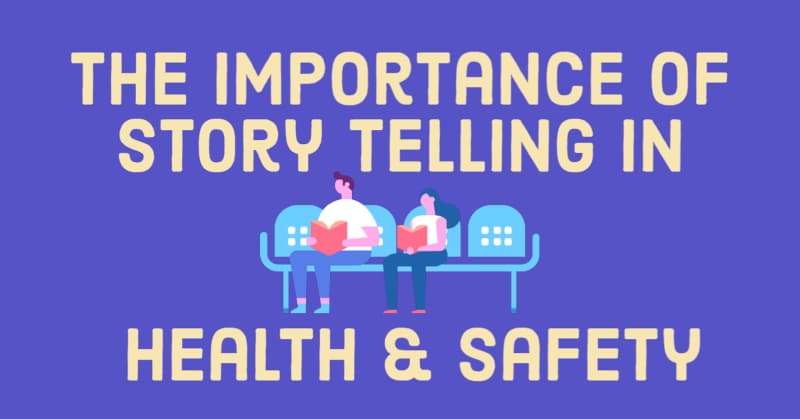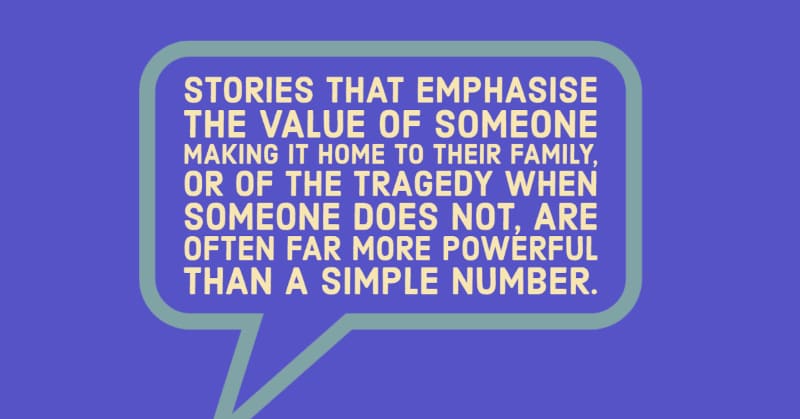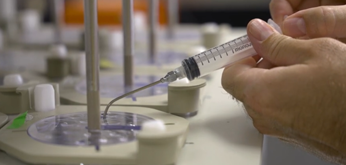23rd November 2021

There was once a man who lived in a house, not unlike anything you’ve lived in before. A simple old-fashioned thing, designed in the 60s housing boom - no fuss, fashionable brown-glass windows and a spacious backyard. Some would argue the building was outdated in 2021, but John was not fussed. In today’s economy, a house was indeed a house, and he couldn’t complain.
One fine morning, John was working from home, eyes glued to the laptop in his small office. His noise-cancelling headphones lay next to the computer; he’d need them soon when the builders started their work on the house renovations. They were a noisy bunch, but getting the job done efficiently, which he was happy with.
Suddenly, there was a sharp knock on the door.
“Come in,” John responded, glancing up from his paperwork.
The door opened, and in walked a tradesman in saggy pants, bearing a hard helmet tucked under one arm.
“Morning mate. I’m Todd, one of the guys subcontracting on the roof. My boys are ready when you are - anything you want us to know?”
“John.” John smiled back at him, standing from his seat and stretching a large hand to shake Todd’s. “Pleased to meet you.”
Todd smiled, nervously. John was an imposing figure, whose intimidating voice boomed over others. He twitched, as John suddenly clapped him on the shoulder, directing him out the door.
“Soon as you and your boys have your harnesses on, we’ll be ready to go.”
Todd glanced across to John. “Oh, we don’t bother with those things. We’ve got the helmets here, they’ll do the job.”
John abruptly stopped moving. “Todd. I’m a reasonable man. But I can’t have your boys not wearing the correct gear.”
Todd frowned. “They’re a bit of a waste of time. We’ve never bothered with them. We stay well clear of the edge.”
Sighing, John sat back down in his chair. He felt like he was ageing by the minute with this nonsense. “Todd, I’ll say it one more time: I need you to follow the rules.”
Todd tried to disguise his eye roll. “Look John, mate, I’ve been working in this industry for more than two decades now. I know what I’m doing. We’ve never had any issues, we’ll be fine - “
“Enough!” Todd’s rambling response was interrupted by a fuming John. “This won’t work for me. If you want to keep working on this job, you need to go to Bunnings right now and buy your harnesses.”
He paused, inhaling. “Otherwise, I’ll have no choice. You can’t complete the job until you’re in the correct gear.”
Todd stalled and stared at John, slightly horrified. “You’re serious.”
John shook his head firmly. “I’m afraid so. That’s your choice, Todd. Get the gear or get out of here.”
Todd sighed and hung his head in finality. “I guess I’ll have to get them then.”
“It's for your own good.”
2 years later.
Two years had passed, and John was working at his desk.
A sharp rap on his front door startled him. John lumbered up from his desk, crossed the house and opened the front door. Standing there was Todd; that roofing contractor he barely remembered from 2 years ago.
"John, it's Todd. I don't know if you remember me."
"Yes. Yes. Sort of! Come in."
Todd entered the room, dipping his chin slightly. There was a solemn change in his expression, the only sign that two years had passed. The merry twinkle in his eye had dulled somewhat.
“Todd. Long time, no see. How can I help you, lad?”
Todd strode forward in two, quick steps, before collapsing into the chair in front of John’s desk. “I have to tell you, John, I owe you,” he said, wiping a hand over his brow. “You remember our conversation years ago. I thought you were PC gone mad when you made us buy those harnesses.”
John chuckled. “Yes.”
“Well,” Todd continued. “I owe my younger son’s life to you. Ever since that day, we’ve been using harnesses, and John - yesterday that same harness saved his life.”
John tried to respond but there was a lump in his throat.
“John, if it wasn’t for you, I would be burying my own son.” Todd said, earnestly.
"I can’t thank you enough", he continued.
Both men stood, in mutual respect and admiration; and, without a moment’s pause, John gave Todd a brotherly hug.
Stories.
They’re an unmissable, essential element of human society. From the brief gossip at the water cooler in the office, to the night-time tales before you went to bed in your youth, stories are the glue that holds us together and shapes our worldview.
Stories within a health and safety context, in particular, can give a healthy dose of authenticity to otherwise dry rules and regulations. The emotion that’s created from hearing a thrilling, terrifying, sad or inspiring story helps the tale stick in our mind far longer than a simple statistic might.
Stories are powerful
Since the birth of language and communication as we know it, humans have been telling stories to connect, pass important information and explain. As inherently relational beings, storytelling is one such way that we convey emotion and connect with others, over a collective mental conjuring of a woven story.
From Harry Potter to the Bible, storytelling has captivated audiences for thousands of years. The power of storytelling lies in its connection to collective emotions that we all relate to. Emotions, when used in the right context, are a useful tool to harness and certainly affect how we each perceive the world.
Our most vivid memories are the ones attached to a strong emotion. When we tell stories, a captivated audience is swept into the tale through the emotion they feel when listening. Perhaps a rush of adrenaline as they hear a thrilling experience, or a tear welling in their eye as their friend recounts a sad situation. We can immerse ourselves within a story and create strong emotions as we do so, leading to longer-lasting memories. Even emotions that we can’t quite put a finger on, such as inspiration or a sense of awe can still help to code a strong memory in the long-term memory of the brain.
Narratives are a cornerstone of our culture and society. We use them to create ties between family members and different generations. Narratives are even theorised to form part of our identity. Narrative identity theory states that we form our self-concept via stories we’ve collated about our lives. In this sense, notable experiences with us as the character who experiences a conflict and finds a resolution, are how we form our identity.
To illustrate, consider an individual who was made redundant in 2020. They experienced this issue, but learnt from their situation, and consequently used their newfound wisdom to find their next job. This particular story has shaped how an individual sees themselves - resilient and determined to find a new job - and therefore helps the formation of their identity.
Any conflict or situation in our life that shapes us can become a narrative, a story we can share, that paints the picture of who we are. Much like narrative identity theory helps shape individual identity, we can use these principles to shape organisational identity, finding stories that encapsulate who we are. A strong safety culture within the organisation can be created with such stories, similar to the tale of Todd and John.
The captivating tale of Health and Safety
Health and safety incidents can happen to anyone and affect everyone. However, as any health and safety leader can attest to, mobilising positive change and creating a stronger safety culture is no easy feat. Indeed, the age-old question lingers: how can safety leaders engage workers to take it more seriously? It’s not uncommon for health and safety topics to be met with sighs and vacant stares, and it’s certainly not easy to motivate an entire workforce to toe the line with rules and regulations.
Driving home the message of health and safety with shocking statistics and cold, hard facts can be partially effective at creating a stronger safety culture. Without a doubt, detail and functional statistics have their place. However, the art of telling a well-crafted story can be the catalyst to drive real change and create a heightened motivation for each individual person to take safety seriously.
Given the underlying immersive experience that a story brings, storytelling is certainly a useful tool for learning. One of the reasons stories can be so effective to teach something is that the narrative appeals to each learning style. Audible learners can enjoy listening to the tale, while visual learners can conjure an image in their minds of the descriptions shared and kinesthetic learners can feel the emotions the story has raised.
Stories about health and safety can create an authentic side that brings life to the regulations and rules. When staff hear stories about people similar to them, it can strike a chord that resonates, helping to humanise the health and safety rules and give context behind the regulations.
At the end of the day, the role of health and safety exists to keep people safe. There’s a lot of emotion that comes with this truism of the industry, and we can capitalise on that emotion to drive home important messages. Stories that emphasise the value of someone making it home to their family, or of the tragedy when someone does not, are far more powerful than a simple number.

Crafting an engaging story
Without a doubt, a valuable story goes a long way, especially in creating a safety culture and emphasising critical messages for workers. However, the final ingredient is the story itself. It needs to be engaging, emotive and contain a simple take-home message that sticks in the audiences’ mind.
Many previous incidents you’re aware of in health and safety are great ingredients for a good story. In many ways, each incident has a character, an issue and a subsequent resolution or learning. When telling a story, be sure to include those critical elements that will captivate your audience, and provide them with a resounding moral to walk away with and contemplate.
Stories can be anecdotal situations that you or someone you know has experienced. Alternatively, you could share a clever analogy to affect action. Conjure images in people that simplify a complex idea, or explain the value of a particular rule.**
Consider the tale of John and Todd: it was an interesting read because the story has an issue, a built-in conflict, and then a resolution, with a final moral that we can all relate to: seemingly impractical health and safety rules are necessary because they save lives.
Final words
Stories transport us. Situations such as the story of John and Todd are examples of how we can explain rules and give them the necessary context that they might lack - so that people stay safe. Uncovering the power of emotion and how it affects our memory and engagement is an undeniably useful tool for any modern workplace.
Next time you sense a lack of engagement at the meeting table after outlining the updated regulations, perhaps try being with "Once upon a time...".
Who knows? It might save a life.







